 |
 |
 |
| |
Changes In HBsAg Levels Among Patients With Chronic Hepatitis B Treated With Peginterferon Alfa-2a [40kd] Enrolled In The S-Collate Cohort Study
|
| |
| |
Reported by jules Levin
AASLD Nov 2 2010 Boston
Marcellin P,1 Xie Y,2 Chen XP,3 Lou GQ,4 Chen YP,5 Rothe V,6 Regep L,7 Martins EB,8 Jia J,9 Wei L10
1Service d'Hepatologie and Centre de Recherches Biologiques Beaujon (Inserm CRB3), University of Paris, Clichy, France; 2Beijing DiTan Hospital, Beijing, China; 3Guangdong General Hospital, Guangdong Academy of Medical Science, Guangzhou, China; 4The Sixth People's Hospital of Hangzhou, Hangzhou, China; 5The First Affiliated Hospital of Wenzhou Medical College, Wenzhou, China; 6IST GmbH, Mannheim, Germany; 7F.Hoffmann-La Roche Ltd, Basel, Switzerland; 8Genentech - A Member of the Roche Group, South San Francisco, California, USA; 9Beijing Friendship Hospital, Capital Medical University, Beijing, China; 10Peking University People's Hospital, Beijing, China
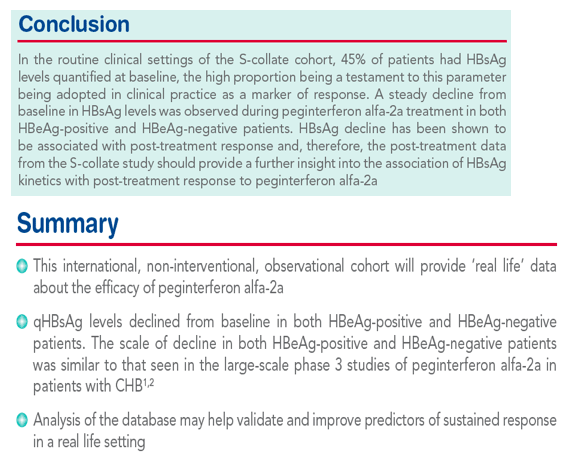
Background
Several studies have demonstrated the value of hepatitis B surface antigen (HBsAg) quantification in predicting response to pegylated interferon in hepatitis B e antigen (HBeAg)-positive and HBeAg-negative patients1-4 and shown that HBsAg is a more appropriate marker of post-treatment response than hepatitis B (HBV) DNA levels4
Patients who achieve sustained immune control (HBeAg seroconversion in HBeAg-positive patients and HBV DNA <10,000 copies/mL in HBeAg-negative
patients) following a finite course of peginterferon alfa-2a [40KD] (PEGASYS)
have significantly greater decreases in HBsAg during treatment compared with
patients not achieving a response.3,4 Several analyses involving small numbers of patients have identified on-treatment HBsAg values associated with post-treatment response, or lack of response, post-treatment;4-6 however, these findings need to be confirmed in larger settings
The S-collate cohort study provides an opportunity to determine whether the
findings from highly controlled clinical trials can be confirmed and reinforced in the more complex and varied setting of routine clinical practice
OBJECTIVES
The international, non-interventional, S-Collate cohort study aims to assess predictors of response in patients with HBeAg-positive or HBeAg-negative chronic hepatitis B (CHB) treated in routine clinical practice with peginterferon alfa-2a [40KD] (PEGASYS) according
to local prescribing information. The analysis presented here is an interim assessment of quantitative HBsAg (qHBsAg) data during the first 24 weeks of peginterferon alfa-2a therapy
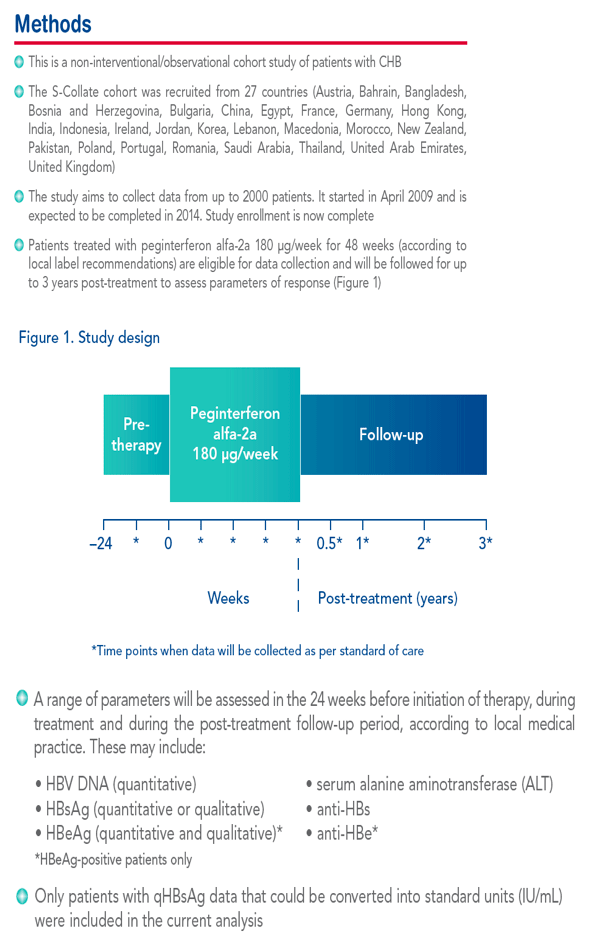
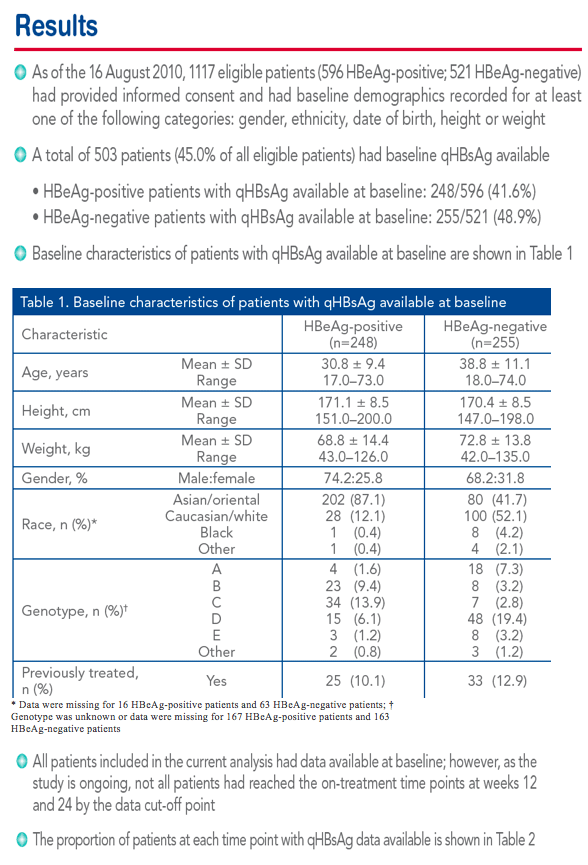
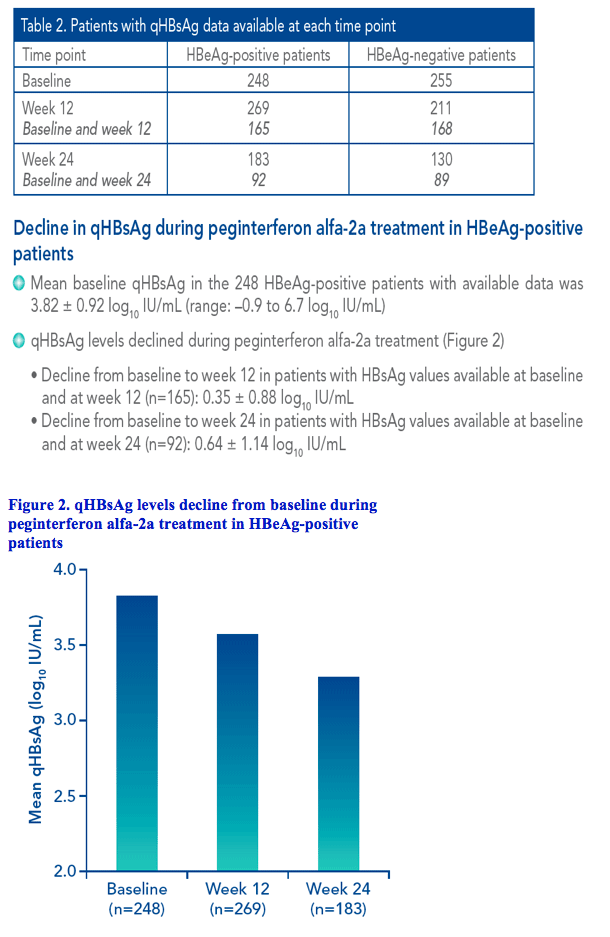
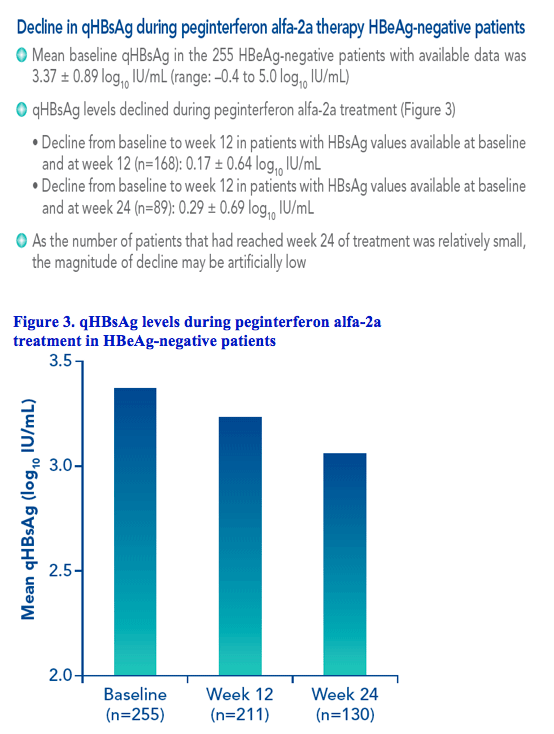
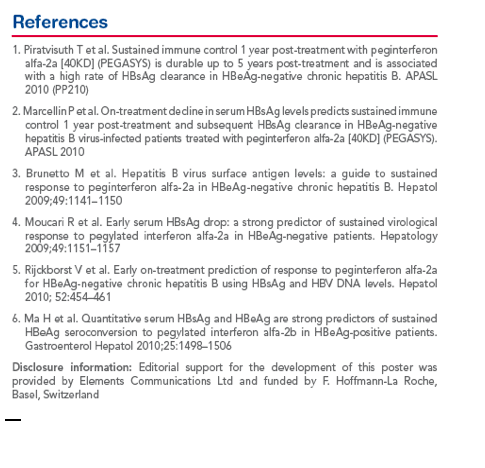
|
| |
|
 |
 |
|
|